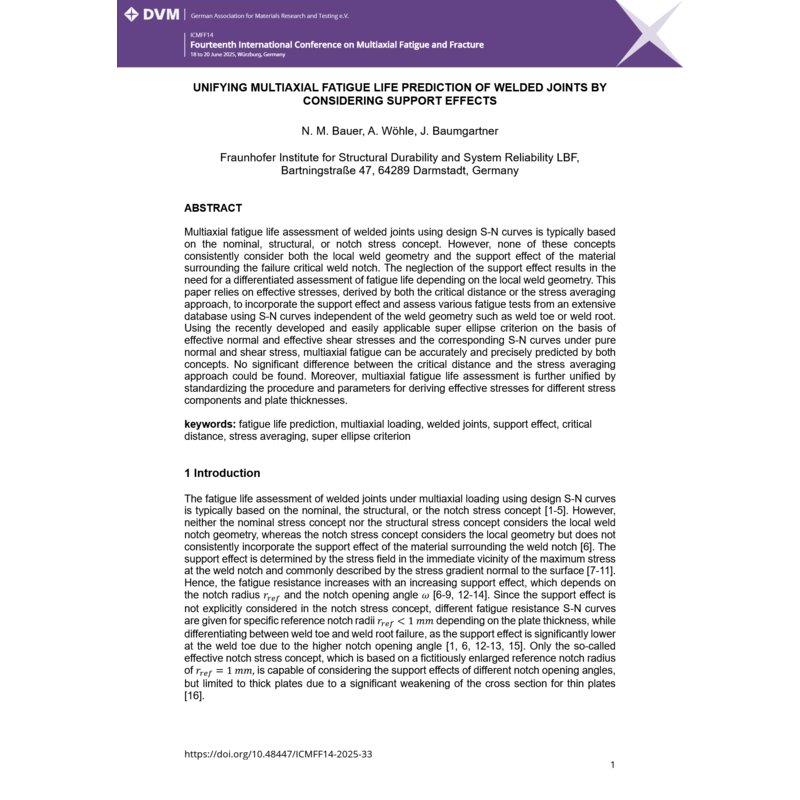- Online only



Multiaxial fatigue life assessment of welded joints using design S-N curves is typically based on the nominal, structural, or notch stress concept. However, none of these concepts consistently consider both the local weld geometry and the support effect of the material surrounding the failure critical weld notch. The neglection of the support effect results in the need for a differentiated assessment of fatigue life depending on the local weld geometry. This paper relies on effective stresses, derived by both the critical distance or the stress averaging approach, to incorporate the support effect and assess various fatigue tests from an extensive database using S-N curves independent of the weld geometry such as weld toe or weld root. Using the recently developed and easily applicable…

Datenschutzbedingungen (bearbeiten im Modul "Kundenvorteile")

Lieferbedingungen (bearbeiten im Modul "Kundenvorteile")

Rücksendebedingungen (bearbeiten im Modul "Kundenvorteile")
Multiaxial fatigue life assessment of welded joints using design S-N curves is typically based on the nominal, structural, or notch stress concept. However, none of these concepts consistently consider both the local weld geometry and the support effect of the material surrounding the failure critical weld notch. The neglection of the support effect results in the need for a differentiated assessment of fatigue life depending on the local weld geometry. This paper relies on effective stresses, derived by both the critical distance or the stress averaging approach, to incorporate the support effect and assess various fatigue tests from an extensive database using S-N curves independent of the weld geometry such as weld toe or weld root. Using the recently developed and easily applicable super ellipse criterion on the basis of effective normal and effective shear stresses and the corresponding S-N curves under pure normal and shear stress, multiaxial fatigue can be accurately and precisely predicted by both concepts. No significant difference between the critical distance and the stress averaging approach could be found. Moreover, multiaxial fatigue life assessment is further unified by standardizing the procedure and parameters for deriving effective stresses for different stress components and plate thicknesses.